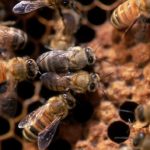 “How Markets Benefit Honeybees and Mankind,” By Angela Logomasini, Ph.D.
“How Markets Benefit Honeybees and Mankind,” By Angela Logomasini, Ph.D.
After more than a decade of panicked reports about honeybees disappearing and potentially going extinct because of a phenomenon called “colony collapse disorder,” The Washington Post reported last week that the number of hives in the United States has reached a 20 year high. At the same time, I was making presentation at a meeting of the American Legislative Exchange Council, explaining that globally, there are more beehives today than there were in 1961, according to the Food and Agriculture Organization (FAO) of the United Nations.
That is not to say that beekeepers haven’t had some challenges related to diseases and other factors that affect hive health. While such issues may raise the cost of keeping hives, they have not led to any serious long-term decline that warrants panic about the survival of this species.
Honeybees will not go extinct any time soon for the same reason we don’t fear the loss of cows or chickens. All these species have important market value. Honeybees are largely a domesticated species, not completely different from cattle or even the family dog, and their very presence here in the United States has always been driven by the desire for honey or pollination services. In fact, when the colonists appeared in America, there were no honeybees. They had to be imported from Europe so that the settlers could have an affordable supply of honey.
And it’s not just the honeybees’ trip to America that has benefited their numbers. A California beekeeper pointed out another example to me earlier this week, directing me to Bee Aid International—a project designed to help communities in developing nations by teaching them beekeeping. This is truly a beautiful example of how market demand can benefit mankind as well as the world’s many other creatures.
On their website they explain:
Why bees? — Beekeeping is the epitome of the “to teach a man to fish” proverb. Teach a man (or woman!) to keep bees, and how a proper hive should be made, and they not only have another easy source of income for themselves, but they can teach others in the community, and then usually local carpenters will start to specialize in making hives and have income that way, garment makers will have a new market for protective clothing, and metal-smiths will have a market for the necessary tools. In the other direction in the supply chain there’s often middle-men (more often than not women) who specialize in buying honey from the farmers and selling it in the market, and with additional training marketable opportunities with wax products can also be developed. Impact reports have indicated a 56-66% increase in income of the entire community previous projects have been completed in.
That’s music to my ears; it’s a win-win situation for this species and humans around the world.


